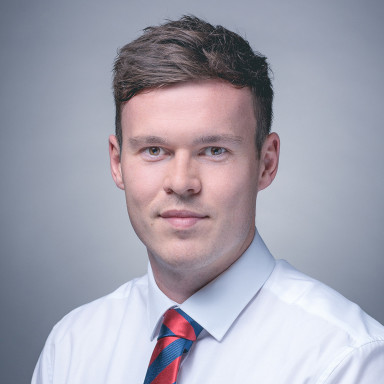- The fund invests in disruptive businesses with strong growth prospects in the world's largest stock market
- The managers' long term time horizon means the fund tends to have a relatively low annual turnover of stocks
- The fund has underperformed over the last year as its high growth investment style has fallen out of favour
- This fund features on our Wealth Shortlist of funds chosen by our analysts for their long-term performance potential
How it fits into a portfolio
Baillie Gifford American aims to grow an investment over the long term. The managers' growth style of investing aims to benefit from investing in exceptional growth businesses and holding them for long enough to reap the rewards. We think this fund could work well in a portfolio with little exposure to the US, invested for long-term growth. Its focus on large companies means it could also sit well alongside a US equity fund focused on medium-sized or higher-risk smaller sized companies, or a US fund with a value investment style.
Manager
The team behind the fund is made up of four investors. Tom Slater joined Baillie Gifford in 2000 and has risen up the ranks to become Head of US Equities. He's co-managed this fund since 2016 and is also manager of Scottish Mortgage Investment Trust. Gary Robinson joined Baillie Gifford in 2003 and has experience of working in the Japanese, UK and European equity teams prior to joining the US equity team. Robinson has been co-manager of this fund since 2014.
Kirsty Gibson joined Baillie Gifford after graduating in 2012 and has been a co-manager of the fund since the start of 2018. Dave Bujnowski is the fourth and final co-manager. After previously working for UBS and Coburn Ventures he joined Baillie Gifford in December 2018 initially as an Analyst. During his time at Coburn Ventures, Bujnowski provided research for investors, including Baillie Gifford. As a result, he was familiar with the culture and investing philosophy at the company ahead of joining. In May 2020, 17 months after joining Baillie Gifford, he was promoted to co-manager. Bujnowski remains in New York but is in close and regular contact with Slater, Robinson and Gibson, who are based in Edinburgh.
We think the managers are well resourced to focus on the job in hand and they also have access to a wider team of almost 40 other investors who spend time researching US companies.
Process
The managers invest in companies they think have high growth potential that could be capable of delivering exceptional returns over the long run. They believe that companies with resilient business models are good long-term investments and that corporate culture can be a key component of company performance and ultimately investor returns although of course there are no guarantees.
Culture is difficult to measure and capture. But the managers believe it's one of the most underappreciated drivers of long-term returns. Companies with a strong culture are often adaptable, durable and willing to invest for the future at the expense of short-term profits. Although there's no exact science, they believe it's these companies that are often the ones to really deliver on their vision and purpose.
The managers spend a lot of time thinking about industry dynamics and developing trends across the economy, preferring to think of their investments in themes rather than sectors. They've grouped them into nine distinct themes, the largest of which include: innovative healthcare (22.9%), the future of commerce (22.4%) and new enterprise (20.5%). The numbers in brackets indicate how much of the fund is invested in companies they think will profit from each trend playing out over the long term. Many of these businesses disrupt old ways of doing things. In the innovative healthcare category, the trend the fund has the largest exposure to, you'll find businesses like Moderna, Abiomed and Illumina.
Founder involvement is another element that the managers view positively. They believe these individuals, who usually still have much of their wealth tied up in the business, often possess the strong vision that's required to continue growing the company. The managers believe few companies are capable of delivering exceptional returns over the long run, so they prefer to run a relatively concentrated fund of between 30 and 50 companies. This means each one can contribute significantly to returns, although this approach increases risk. The fund also has a small amount in smaller companies, which are higher-risk.
In recent months the managers added online gaming business Roblox to the fund. The business provides a platform for users to generate their own content, primarily games for each other. The managers have conviction in the company's potential to expand its appeal and the different ways it can make money.
The managers' long-term time horizon means they don't often buy or sell companies. This means investments that have performed well can remain in the fund as long as the managers remain convinced they have further growth potential. They also tend to hold onto companies that fall out of favour with other investors for longer than some peers.
Culture
Baillie Gifford is an independent private partnership founded in 1908. It's owned by partners who work full time at the firm. This ownership structure means senior managers have a vested interest in the company, and its funds, performing well. Three of the fund's co-managers, Tom Slater, Dave Bujnowski and Gary Robinson are partners at Baillie Gifford. We think this has helped cultivate a culture with a long-term focus, where investors' interests are at the centre of decision making. We also like that fund managers are incentivised in a way that aligns their interests with those of long-term investors and should retain talented managers.
ESG Integration
The managers think sustainability goes hand in hand with being a long-term investor in businesses. Their focus on long-term growth opportunities typically involves investing in disruptive and technology-driven businesses. These companies are often capital-light with a low carbon footprint.
Baillie Gifford's funds are run with a long-term investment horizon in mind – they see themselves as long-term owners of a business, not short-term renters. So, assessing whether society will support, or at the very least, tolerate, the business model over the long term, and whether management will act as good stewards of shareholders' capital is an important part of the investment process. Dedicated ESG analysts sit with and report into their respective investment teams, and the firm's ESG efforts are supported by a dedicated climate specialist team, an ESG Services team (responsible for voting operations and ESG data) and an ESG Client team (responsible for ESG-related client communications). Individual investment teams are responsible for voting and engagement for the companies they invest in. Investment in controversial weapons is prohibited across the firm.
The firm reports all its voting decisions and provides rationale in situations where it voted against management or abstained, in a detailed quarterly voting report. There is also a quarterly engagement report which details the companies engaged with, and the topic discussed, and further engagement case studies are available on the Baillie Gifford website. All this information is brought together in the firm's annual Stewardship Activities report.
Cost
The ongoing charge for this fund is 0.51%, but HL clients benefit from a saving of 0.20%, resulting in a net ongoing charge of 0.31%. This saving is provided through a 'loyalty bonus', which is tax-free in an ISA or SIPP. However, they may be subject to tax in a Fund and Share Account. The HL platform fee of up to 0.45% per annum also applies.
Performance
The fund aims to outperform the S&P 500 index by 1.5% per year after costs over any five year period. Over the last five years to the end of August, the fund has delivered a return of 89.41%*, compared with 79.26% for the IA North America peer group average.
The share prices of well-known US companies can react very quickly to new information. This can make it difficult to consistently perform better than the broader market over the long term. We think the investment experience of the managers combined with the resources they have access to means they have the potential to do so.
Over the last 12 months the fund has lagged the marginally positive return delivered by the IA North America peer group average by 49.69%. The managers' high-growth investment style has fallen out of favour with investors. High and rising inflation has seen a series of interest rate rises by the US central bank and there are expectations of further rate rises to come. There are concerns this could tip the US economy into a recession.
This means investors have been less willing to buy companies with high growth potential, which has seen share prices of some the fund's investments fall significantly. Our analysis suggests that over the last year, the fund's investment in ecommerce platform Shopify was among the most significant detractors from performance. As we've emerged from the pandemic, the pace of growth at the company has slowed and it expects to remain loss making as it invests in developing its logistics capabilities. The managers remain supportive of this approach and the potential for it to create value over the longer term.
However, not all of the fund's investments have lost money over the period. One of the fund's better performers was Alnylam Pharmaceuticals. The business is developing a new class of drugs and the managers are optimistic that the return to normality from the pandemic will allow them to work through its pipeline of trials that were delayed.
Fund managers at Baillie Gifford are afforded significant autonomy over how they invest which means the fund can look very different to the index. The managers' growth style of investing and preference to run a concentrated fund means that performance can look quite different over shorter periods.
The managers acknowledge that it's been a difficult period for investors in the fund as the share prices of many holdings have fallen. They remain confident that the fund is invested in businesses with more resilience than recent share price moves suggest. One year is a short timeframe to consider performance over though and investors should consider it in the context of a longer time horizon and not in isolation. Past performance isn't a guide to the future.
| Annual percentage growth | |||||
|---|---|---|---|---|---|
| Aug 17 -
Aug 18 |
Aug 18 -
Aug 19 |
Aug 19 -
Aug 20 |
Aug 20 -
Aug 21 |
Aug 21 -
Aug 22 |
|
| Baillie Gifford American | 47.81% | 4.61% | 77.31% | 34.76% | -48.74% |
| IA North America | 18.03% | 7.39% | 9.30% | 28.18% | 0.95% |
Past performance isn't a guide to the future. Source: *Lipper IM 31/08/2022.
Find out more about Baillie Gifford American including charges
Baillie Gifford American Key Investor Information
Want our latest research sent direct to your inbox?
Our expert research team provide regular updates on a wide range of funds.

